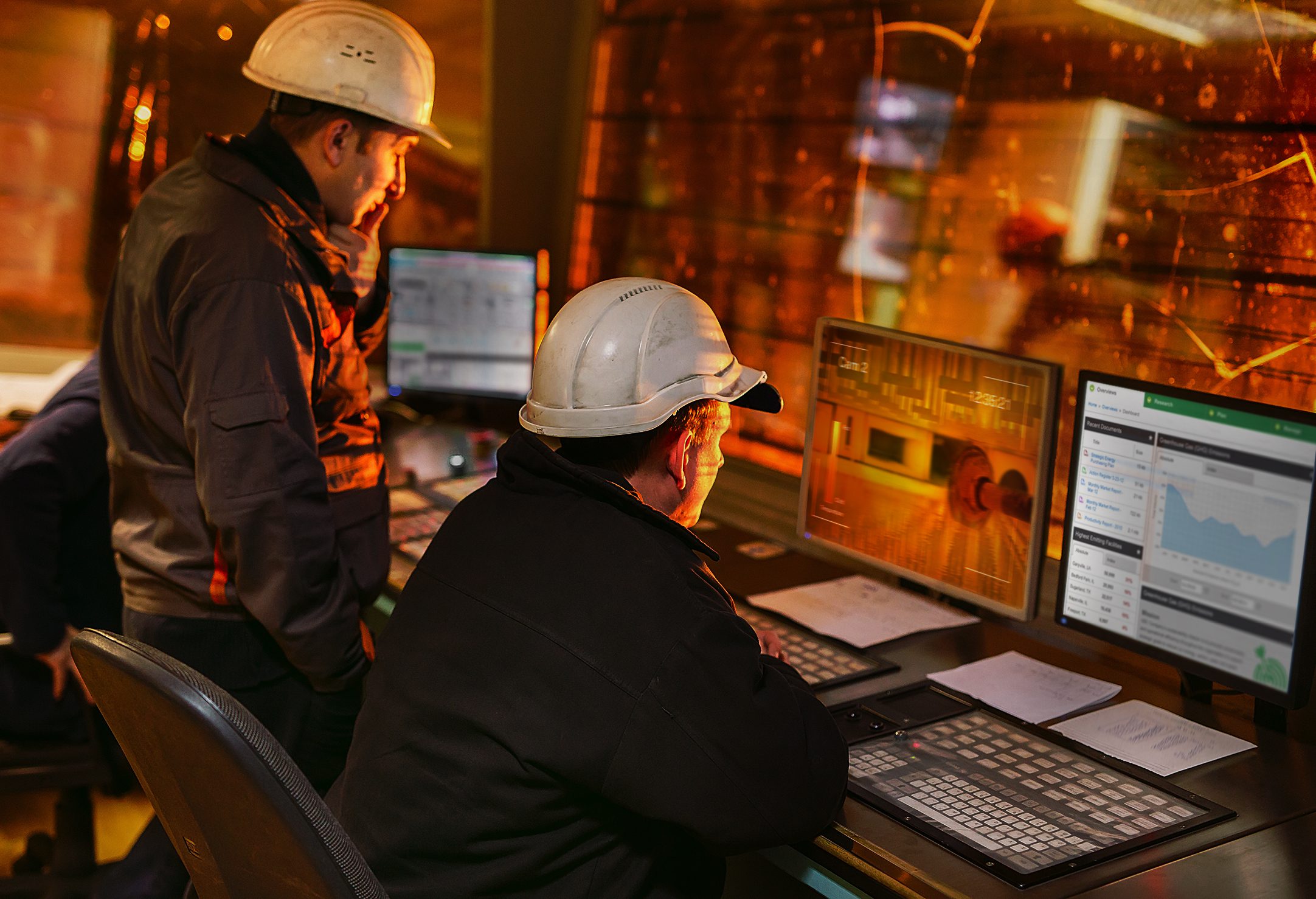Consider the rapid digital transformations we’ve experienced—from the first personal computers, the global internet, and mobile computing to today’s AI technologies. These transformations have changed societies, economies, and personal lives on a scale and speed unlike anything before.

The glass industry is also undergoing a digital transformation. Glass is an integral material across the architecture, construction, automotive, renewable energy, and packaging sectors. Typically produced in 1500°C gas-fired melting furnaces, a very energy-intensive and, in many cases, emissions-intense process, the glass industry contributes roughly 95 million tons of CO2 annually. 80% of those emissions are from the melting furnace. Converting the industry from its traditional furnaces to digitized hybrid and full-electric versions is essential in its digital transformation.
However, the real power of digitization lies in more than one piece of equipment. Digitization allows us to visualize and understand the entire value chain—every process connected to the glass produced. It also enables all stakeholders along the value chain to take a data-driven approach to their work.
Let’s delve into the glass industry’s transformative journey, mainly focusing on digitization’s role along the value chain and how it helps decarbonization efforts.
Decarbonizing beyond the furnace
To be sure, glass furnaces require a significant focus since 80% of the industry’s emissions come from this process. The glass needed for our vehicles, commercial buildings, and homes will more than double between now and 2050. These industries are committed to science-based targets, including their supplier’s emissions, which underscores the urgency for the glass industry to evolve and decarbonize to align with global efforts.
There is also an extensive value chain intimately connected to furnace operations. It starts with sourcing raw materials like silica sand and cullet and extends through preparation, melting—increasingly in electric furnaces for decarbonization—forming, annealing, and stringent quality inspections. Post-production, there is packaging and distribution to various markets. Finally, there is the recycling of glass, which then reintegrates as a raw material and closes the production loop.
Seeing the invisible
Digitization and electrification allow for a comprehensive approach to sustainability and decarbonization. For example, digital twins allow for the simulation and optimization of furnace operations, offering previously unattainable insights due to the opaque nature of glass melting processes. More sophisticated control systems now provide higher precision, efficiency, and sustainability levels. There are numerous other benefits:
- Streamlining operations. Automating and optimizing processes from raw material procurement to final product distribution, reducing manual errors and increasing efficiency.
- Improved quality control. Using sensors and data analytics to monitor and continuously improve product quality throughout production.
- Energy management. Implementing power and energy management systems for real-time energy use monitoring and adjustment leads to more efficient furnaces and reduced carbon emissions.
- Predictive maintenance. Machine learning algorithms predict equipment failures before they occur, minimizing downtime and extending the life of machinery.
- Supply chain transparency. Visibility across the entire chain, from sourcing to end-user delivery, helps manage resources better and faster responses to market changes.
- Data-driven decisions. Analyzing data trends and insights can improve operational strategies and product development.
- Closed-loop recycling. Digitized recycling processes efficiently manage the return of glass products and ensure materials are effectively re-entered into production cycles.
Energy management & optimization success
There are many examples of digitization success. Saint-Gobain, specializing in innovative glass products for the construction, automotive, and other industrial sectors, implemented energy management systems, intelligent automation solutions, and centralized energy procurement. These initiatives help the company track consumption and spending, monitor and manage its energy use more effectively, identify opportunities for energy savings, and implement sustainability strategies. Saint-Gobain has saved millions of dollars, freeing up resources to deliver leading-edge, sustainable solutions.
Guardian Glass, one of the world’s largest float and fabricated glass manufacturers, shares this commitment to sustainable operations. They upgraded their capacitor banks, power quality meters, and power management software. They also used a Digital Service Plan to ensure their power network was continually optimized and operating 24/7. The result was a 4% monthly credit on utility bills and a two-year return on investment.
Readying the glass production of tomorrow
Digitization opportunities in the glass industry underscore the need for expert guidance and collaboration. These tools must be safe, cybersecure, and resilient. With its expertise in electrification and energy management solutions, Schneider Electric can assist glass companies in navigating this transition.
With a well-defined roadmap, glass companies can drive their net-zero plans faster and more affordably. We aim to equip our customers with the means to be sustainable, efficient, and resilient—transforming them into impactful innovators. Our digital solutions support the net-zero aspirations of our customers and span the entire value chain from raw materials sourcing and production to product recycling. Our global network of 2,000+ dedicated sustainability experts and 6,500+ highly trained field services engineers can help you throughout your glass process decarbonization journey with digitization.
Ready to take the next step toward digitization? Connect with our Glass Solutions Consultants at Glasstec. Find us in booth #14G49, October 22-25, where the future of sustainable glass will come into clear focus.




Add a comment